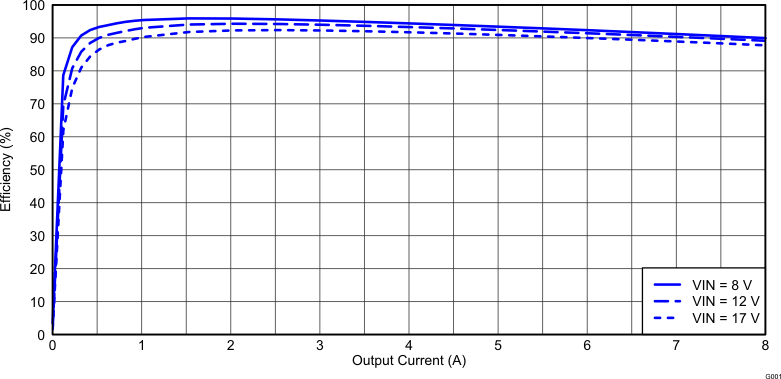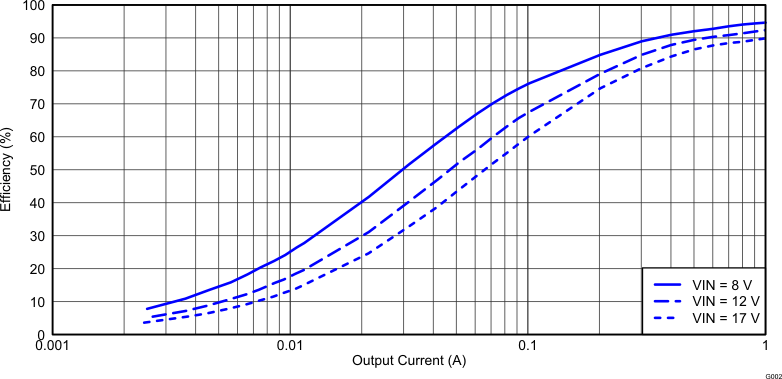SLVU479A October 2011 – August 2021 TPS54821
2.2 Efficiency
The efficiency of this EVM peaks at a load current of about 2 A and then decreases as the load current increases toward full load. Figure 2-1 shows the efficiency for the TPS54821EVM-049 at an ambient temperature of 25°C.
 Figure 2-1 TPS54821EVM-049 Efficiency
Figure 2-1 TPS54821EVM-049 EfficiencyFigure 2-2 shows the efficiency for the TPS54821EVM-049 using a semi-log scale to more easily show efficiency at lower output currents. The ambient temperature is 25°C.
 Figure 2-2 TPS54821EVM-049 Low Current Efficiency
Figure 2-2 TPS54821EVM-049 Low Current EfficiencyThe efficiency may be lower at higher ambient temperatures, due to temperature variation in the drain-to-source resistance of the internal MOSFET.